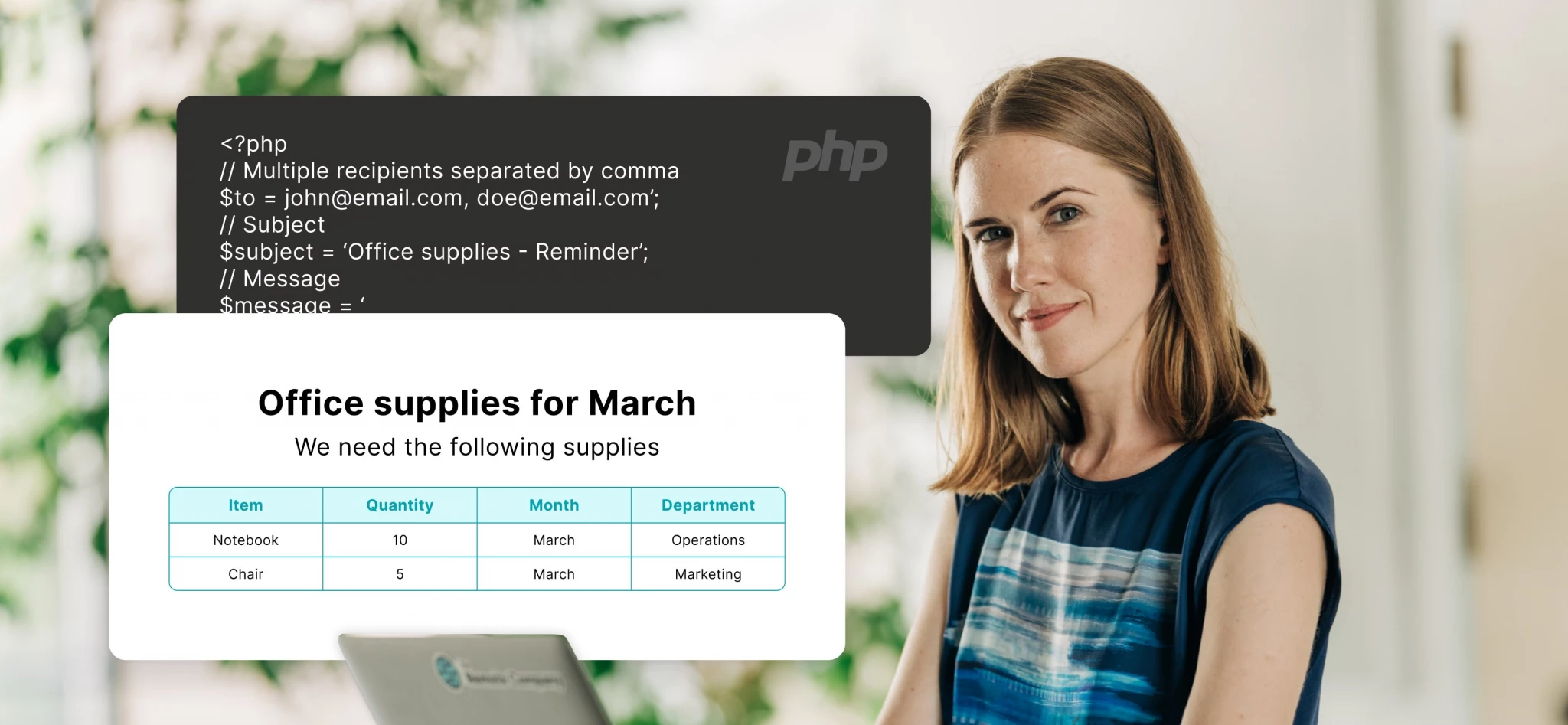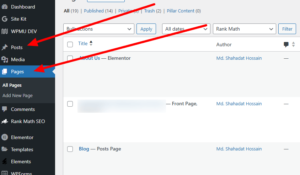Top reasons for syntax errors in JavaScript and PHP include missing semicolons, unmatched brackets, and incorrect variable declarations. Resolve them by careful code review, using linters, and adhering to best practices.
Syntax errors can be a common hurdle for developers working with JavaScript and PHP. These errors often stem from simple mistakes such as missing semicolons, unmatched brackets, or incorrect variable declarations. They can disrupt the execution of scripts, leading to frustrating debugging sessions.
To effectively resolve syntax errors, developers should adopt meticulous code review practices. Utilizing tools like linters can automatically identify and flag syntax issues, making it easier to correct them. Following coding best practices and maintaining a clean, readable codebase also significantly reduce the likelihood of syntax errors. By addressing these common pitfalls, developers can ensure smoother, more efficient coding experiences.
Common Syntax Errors In Javascript
JavaScript is a popular programming language, but syntax errors can be frustrating. These errors stop your code from running. This section explores common syntax errors. Learn how to identify and resolve them.
Missing Semicolons
One common error in JavaScript is missing semicolons. Semicolons end statements in JavaScript. Forgetting them can cause issues. JavaScript often guesses where to end statements, but it’s not always right.
Example:
let name = "John"
console.log(name)Solution:
let name = "John";
console.log(name);Always add semicolons to prevent errors. This makes your code cleaner and more predictable.
Unmatched Brackets
Unmatched brackets are another common error. Brackets include parentheses (), curly braces {}, and square brackets []. Missing a bracket can break your code.
Example:
function greet(name {
console.log("Hello, " + name);
}Solution:
function greet(name) {
console.log("Hello, " + name);
}Always check for matching brackets. This simple step avoids many errors.
Incorrect Variable Declarations
Incorrect variable declarations can lead to syntax errors. Variables in JavaScript are declared using var, let, or const. Forgetting to declare a variable can cause problems.
Example:
name = "John"; // Error: name is not defined
console.log(name);Solution:
let name = "John";
console.log(name);Always declare your variables. This keeps your code organized and error-free.
Common Syntax Errors In Php
PHP is a popular scripting language for web development. It is easy to learn and use. However, even experienced developers make syntax errors. These errors can lead to broken code and frustration. Here are some common syntax errors in PHP and how to resolve them.
Missing Semicolons
In PHP, each statement ends with a semicolon. Missing a semicolon can break the code.
Example:
echo "Hello, World"
The above code will cause an error. The correct code is:
echo "Hello, World";
Always check for semicolons at the end of each statement.
Unclosed Strings
Strings in PHP must be enclosed in quotes. Forgetting to close a string can lead to errors.
Example:
echo "Hello, World;
The above code will cause an error. The correct code is:
echo "Hello, World";
Ensure that all strings are properly closed with quotes.
Misplaced Parentheses
Parentheses are important in PHP for grouping expressions and function calls. Misplacing them can lead to unexpected results.
Example:
if ($a > $b {
echo "A is greater than B";
}
The above code will cause an error. The correct code is:
if ($a > $b) {
echo "A is greater than B";
}
Always ensure parentheses are correctly placed and closed.
Impact Of Syntax Errors
Syntax errors in JavaScript and PHP can cause serious problems. They can break your code and create unexpected issues. Understanding the impact of these errors is vital for developers.
Code Execution Failures
Syntax errors often cause code execution failures. This means your code won’t run at all. For instance, a missing semicolon in JavaScript can halt the entire script. In PHP, a missing closing bracket can stop the server from processing your code.
Common syntax errors include:
- Missing semicolons
- Unclosed brackets
- Incorrect variable names
To fix these, always double-check your code. Use an Integrated Development Environment (IDE) that highlights syntax errors.
Unexpected Behaviors
Even if your code runs, syntax errors can cause unexpected behaviors. This means your code might not do what you expect. For example, a misplaced parenthesis in a function can change its logic.
These unexpected behaviors can be subtle and hard to detect. They often lead to bugs that are difficult to trace. To avoid this, use code linters and conduct thorough testing.
Performance Issues
Syntax errors can also lead to performance issues. Even minor errors can slow down your code. For instance, a forgotten variable declaration in JavaScript can cause memory leaks.
In PHP, poorly structured code can make database queries inefficient. These performance issues can degrade the user experience. To resolve them, optimize your code and ensure it follows best practices.
Using tools like code profilers can help identify performance bottlenecks caused by syntax errors.

Credit: softjourn.com
Detecting Syntax Errors
Detecting syntax errors is vital in both JavaScript and PHP development. Syntax errors can cause your code to break or behave unexpectedly. Using the right tools can help you catch these errors early. Below are some effective methods to detect syntax errors in your code.
Using Linters
Linters are tools that analyze your code for potential errors. They can catch common syntax mistakes and other issues. Popular linters for JavaScript include ESLint and JSHint. For PHP, tools like PHP_CodeSniffer are widely used.
Linters can be integrated into your workflow. They provide real-time feedback as you write code. This helps in identifying errors immediately. You can also configure linters to follow coding standards, ensuring consistent code quality.
Code Editors And Ides
Modern code editors and IDEs come equipped with built-in syntax checking features. Editors like Visual Studio Code and Sublime Text offer excellent support for both JavaScript and PHP.
These tools highlight syntax errors as you type. They often provide suggestions to fix the errors. This makes it easier to write error-free code. IDEs like PHPStorm offer advanced features like code refactoring and debugging.
Automated Testing
Automated testing is another effective way to detect syntax errors. Writing unit tests for your code can help catch errors early. Frameworks like Jest for JavaScript and PHPUnit for PHP are popular choices.
Automated tests run your code through various scenarios. They can quickly identify syntax errors and other issues. This ensures your code works as expected before deploying it.
Resolving Javascript Errors
JavaScript errors can be frustrating. But, they are easy to fix. Understanding why these errors happen is crucial. This section highlights key solutions.
Debugging Tools
Debugging tools are essential for fixing JavaScript errors. Browser developer tools are very useful. They help you find and fix errors quickly.
- Chrome DevTools: Open it by pressing F12 or right-clicking and selecting “Inspect”.
- Firefox Developer Tools: Access them by pressing F12 or right-clicking and selecting “Inspect Element”.
- Visual Studio Code: Use its built-in debugger for more complex projects.
These tools help you step through your code. You can see where the error happens. Console logs also help. Use console.log() to print values and track issues.
Consistent Code Formatting
Consistent code formatting prevents many errors. It makes your code easier to read. Indentation is very important. It helps you see the structure of your code.
Use tools like Prettier or ESLint. These tools automatically format your code. They also catch potential errors early.
// Bad Formatting Example
function myFunction() {
console.log("Hello");
return true;
}
// Good Formatting Example
function myFunction() {
console.log("Hello");
return true;
}
Proper Variable Naming
Proper variable naming can reduce errors. Use clear and meaningful names. Avoid single letters or vague terms.
| Bad Example | Good Example |
|---|---|
| var x = 5; | var userAge = 5; |
| var y = “John”; | var userName = “John”; |
Good names make your code self-explanatory. This practice helps you and others understand your code better. It reduces the chances of errors.
Resolving Php Errors
PHP errors can be frustrating for developers. They can stop your code from running. Understanding how to resolve these errors is crucial. Let’s explore the key methods to fix PHP errors effectively.
Error Reporting Settings
First, adjusting your error reporting settings is important. This helps you see all errors. You can set error reporting in your php.ini file:
error_reporting = E_ALL
display_errors = On
You can also set error reporting in your script. Use the following code at the start of your PHP file:
ini_set('display_errors', 1);
ini_set('display_startup_errors', 1);
error_reporting(E_ALL);
These settings help you catch all errors. Fixing errors becomes easier when you can see them.
Using Php Debugging Tools
Using the right debugging tools can save you time. Here are some popular PHP debugging tools:
| Tool | Description |
|---|---|
| Xdebug | A powerful debugger for PHP. It helps trace errors. |
| PHP Debug Bar | An interactive tool. It provides insights into your PHP code. |
| Kint | A debugging tool. It displays structured information. |
These tools provide valuable insights. They help you identify and fix errors quickly.
Code Review Practices
Regular code reviews can prevent many errors. Follow these practices for effective code reviews:
- Peer Reviews: Have another developer review your code.
- Automated Reviews: Use tools like
PHP CodeSniffer. - Unit Testing: Write tests to ensure code works as expected.
Peer reviews catch errors that you might miss. Automated tools enforce coding standards. Unit tests ensure code reliability.
By combining these methods, you can resolve PHP errors efficiently. Your code will be more robust and error-free.
Best Practices To Avoid Syntax Errors
Syntax errors in JavaScript and PHP can break your code. Following best practices can help you avoid these errors. Here are some key strategies to ensure your code runs smoothly.
Writing Readable Code
Readable code is easy to understand. It helps you spot mistakes quickly. Use indentation and line breaks to make your code clear.
Here is an example:
function sayHello() {
console.log("Hello, World!");
}
Avoid long lines of code. Break them into smaller parts.
- Use descriptive variable names.
- Add comments to explain complex logic.
Regular Code Reviews
Code reviews help you catch errors. They also improve code quality. Schedule regular reviews with your team.
During a review, check for:
- Syntax errors
- Logic flaws
- Code readability
Use tools like ESLint for JavaScript and PHP_CodeSniffer for PHP. These tools highlight syntax errors.
Continuous Learning
Keep your skills updated. Learn new coding techniques. Follow coding communities and read blogs.
Here are some resources:
| Resource | Description |
|---|---|
| MDN Web Docs | Comprehensive guides on JavaScript. |
| PHP.net | Official documentation for PHP. |
| Stack Overflow | Community-driven Q&A platform. |
Practice coding every day. The more you code, the fewer errors you make.

Credit: blog.sentry.io
Expert Tips For Beginners
Mastering JavaScript and PHP can be challenging for beginners. Syntax errors are common pitfalls. Here are some expert tips to help you avoid and resolve these errors effectively.
Start With Simple Projects
Begin with small projects. Simple projects help you understand the basics. They let you focus on learning syntax without feeling overwhelmed.
For instance, start by creating a basic calculator or a to-do list. These projects are straightforward and give you a solid foundation.
Follow Coding Standards
Adhering to coding standards ensures your code is clean and readable. It reduces the chances of syntax errors.
For JavaScript, follow the Airbnb Style Guide. For PHP, use PSR-12 standards. These guidelines help you write better code.
Here are some key points:
- Use consistent indentation.
- Keep lines under 80 characters.
- Use meaningful variable names.
Utilize Online Resources
There are many online resources that can help you. These include tutorials, forums, and documentation.
Some valuable resources are:
- MDN Web Docs for JavaScript.
- PHP.net for PHP documentation.
- Stack Overflow for community support.
These resources help you find solutions to common syntax errors quickly.
Remember, practice makes perfect. Keep coding, and you will get better at it.

Credit: www.mailersend.com
Frequently Asked Questions
What Causes Syntax Errors In Javascript?
Syntax errors in JavaScript are often caused by typos, missing brackets, or incorrect use of punctuation. Always double-check your code for these common mistakes.
How Do I Fix Php Syntax Errors?
To fix PHP syntax errors, look for missing semicolons, unmatched brackets, or incorrect function names. Debugging tools can also help identify issues.
Why Does My Javascript Code Not Run?
Your JavaScript code may not run due to syntax errors. Check for missing commas, parentheses, and other common mistakes.
Can Missing Semicolons Cause Errors In Php?
Yes, missing semicolons in PHP can lead to syntax errors. Ensure each statement ends with a semicolon to avoid issues.
Conclusion
Mastering syntax in JavaScript and PHP ensures smooth coding. Regular practice and careful debugging can prevent common errors. Use tools and resources to assist you. Stay updated with best practices and keep learning. Consistent effort will lead to fewer syntax issues and more efficient programming.
Happy coding!






